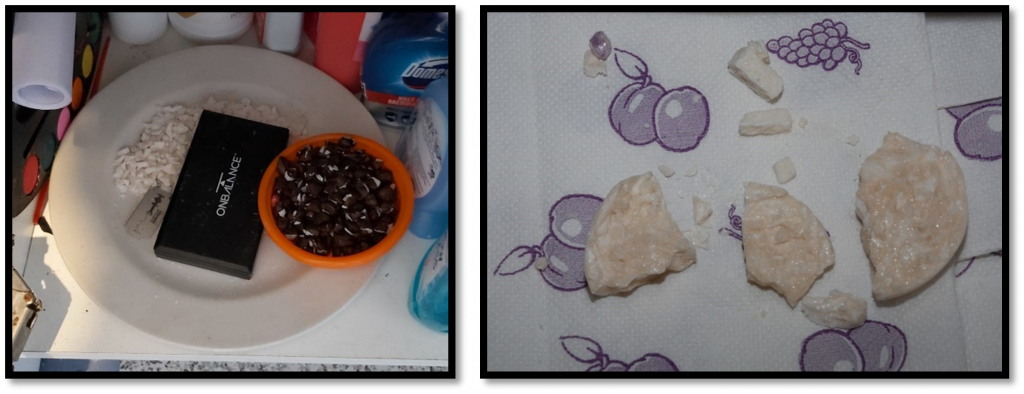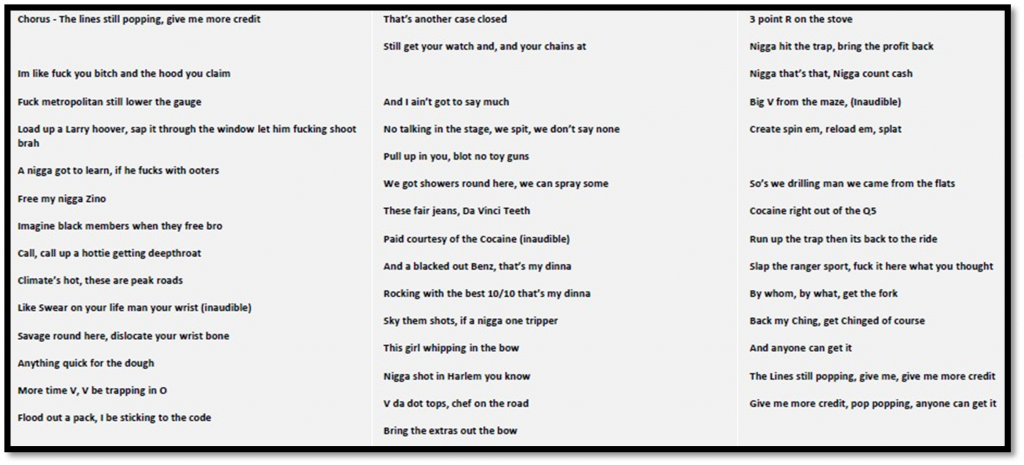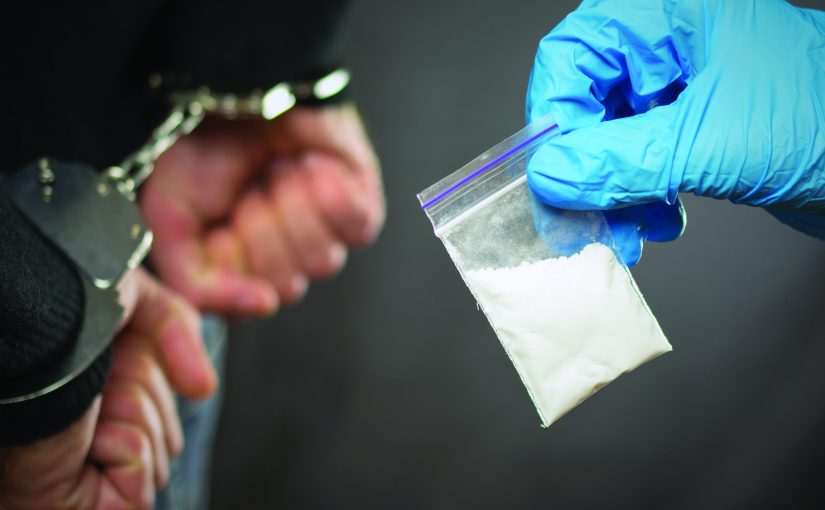County lines is a form of criminal exploitation that has come to prominence in the UK in the last decade due to increased media coverage and portrayals of the gangs involved in film and television.
UK National Police Chiefs Council uses the term “county line”
to describe gangs and organized criminal networks involved in exporting illegal drugs into one or more importing areas [within the UK], using dedicated mobile phone lines or other form of “deal line.”1
The gangs involved are likely to use vulnerable individuals, including children, to move and store the drugs and money. Often, the gangs will employ coercion, intimidation, physical or sexual violence, and dangerous weapons to facilitation the exploitation. All English police forces have reported seeing county lines activity in their area. Young people aged 14 to 17 are most likely to be targeted by criminal groups, but there are reports of children as young as 7 being groomed for county lines.
County lines gangs commonly exploit and groom vulnerable people as part of their operating model, utilizing them for various roles from street-level runners, money mules, or couriers. Alternatively, the exploitation may involve enforcing territory and taking control of the homes of vulnerable people for criminal use, which is known as “cuckooing.”
Debt bondage is a key element of the exploitation, giving gangs control of vulnerable people through fear of violence through noncompliance. Debt bondage works by convincing a person they have incurred a real or fictional debt to the drug gang. The exploited person is then forced to work for the gang to pay off the debt. In a common scenario, drugs are initially provided for “free,” and the gang then decides that payment is due.
Cuckooing often involves a drug gang taking over someone’s address for the purpose of obtaining a base in the area from which to deal drugs. Gangs will generally target substance misusers, vulnerable adults, the elderly, and people in financial difficulty. The gangs will not want to stay at these addresses for more than a week at a time due to the risk via intelligence reporting from the public that would reveal the activities taking place at the location and attract attention from law enforcement, so there is a high turnover of properties needed.
Until recently, law enforcement relied upon covert tactics to infiltrate the gangs and bring them to justice, but one police force in the UK has set a new standard for shutting down county line operations by combining undercover work with the innovative use of communications data analysis. This allowed them to identify drug lines, gather evidence, attribute the drug lines for enforcement, and have evidential packages ready prior to charging those responsible. These tactics have now been adopted as a best practice in forces across the UK.
Essex Police & Operation Vietnam
Essex Police is one of 43 county police forces in England and is one of the UK’s largest non-metropolitan police forces with a strength of more than 3,500 police officers.
Strategically, the Essex Police is an important force. Bordering London, the agency’s jurisdiction consists of affluent city suburbs, large urban areas, industrial centers, rural villages, London Stansted Airport, and two of the UK’s major ports (Harwich, and Tilbury). The force also polices one of the largest expanses of coastline of any force in the UK. The jurisdiction covers 1,420 square miles (3,700 square km) and has a population of around 1,800,000.
The South Essex area was deemed as being a particularly high-risk area for county lines activity and was experiencing serious violence incidents, including murders, directly attributable to the activities of county lines drugs suppliers, which were exporting from the London area into Essex.
In response, the Essex Police launched Operation Vietnam in December 2020 in partnership with the Eastern Region Special Operations Unit (ERSOU) and the National County Lines Coordination Centre. The overt phase commenced in February 2021, followed by the covert phase of the operation in April 2021.
The objectives of Operation Vietnam were to provide enhanced and sustained suppression of county lines organized crime gangs, who market and sell drugs within the South Essex areas of Thurrock, Basildon, and Southend along the A13 road network corridor from London, while simultaneously focusing on intervention and diversion of those who are vulnerable to county lines and at risk of exploitation.
The operation sought to use a combination of covert tactics alongside the use of investigative communications data analysis. The concept was able to suppress drug lines on a large scale, over a sustained period.
Undercover police officers purporting to be Class A drug users were deployed on a street level, while investigative communications data analysis was used to gather evidence and detach tactics away from revealing covert operations.
Traditional use of undercover officers would see evidence gathered over a longer period, usually six months, with enforcement taking place at the end of this period. Unfortunately, however this has a limited impact in terms of the level of enforcement that can be achieved, and in most cases, it carries the risk of allowing the criminal activities to continue until the strike phase and conclusion of the operation.
The combination of covert tactics and investigative communications data allowed a six-month deployment period to proceed without either compromising the covert operations or increasing risk to the undercover officers deployed on the street.
In addition to the enforcement elements of the operation, a main area of focus was to seek opportunities to intervene and protect those that were most vulnerable being exploited for county lines activities.
Three prominent urban street gangs were identified as operating within the South Essex area and vying for dominance of the drug trade in the area. Many of the gang members were youths (under 18 years of age) and identified as working for drugs lines operating in the area, with many being linked to serious violence incidents. For instance, on February 26, 2021, in Leigh-On-Sea, Essex, an 18-year-old male died from a single stab wound to the heart inflicted by a rival 17-year-old male.2
Gang Injunctions
Due to the risks from those involved in urban street gangs to both themselves and others, including the undercover officers that they were likely to encounter on a street level, gang injunctions, a civil tool available under Section 34 of the UK’s Policing and Crime Act 2009, were applied for and successfully obtained against 20 suspects operating across three urban street gangs in South Essex, known as O Block, Leigh Lot, and Gutless Gang.3
The gang injunctions served two main purposes. The first was to force those who had declined assistance from law enforcement previously to accept help. The second was to make these young and vulnerable people too risky to be used by the gang’s hierarchy due to the elevated danger of detection by law enforcement.
In the UK Section 34, Part IV of the Policing and Crime Act 2009 states that a court can grant a gang injunction if two “conditions” are met. The first is that the court is satisfied on the balance of probabilities that the respondent has engaged in, encouraged, or assisted gang-related violence or gang-related drug dealing activity. The second is that the court thinks it is necessary to grant the injunction to either prevent the respondent from engaging in, encouraging, or assisting gang-related violence or gang-related drug-dealing activity or to protect the respondent from gang-related violence or gang-related drug-dealing activity.4
Section 34(5) defines “gang-related violence” as violence or a threat of violence that occurs during, or is otherwise related to, the activities of a group that consists of at least three people and has one or more characteristics that enable its members to be identified by others as a group.5
It is complex to compile evidence that a person is a member of a gang. The addition of “gang-related drug-dealing activity” within the legislation assisted the force in this case, and utilizing investigative communications data analysis of mobile device downloads and other digital evidence helped to build a picture of involvement and operations for drug lines.
Conditions of the gang injunction included
- Location exclusion zone(s)
- Non-association requirements
- Not to own or be in possession of more than one mobile device or sim card, which must be registered to the respondent with the mobile network and with police
- To provide law enforcement with IMEI and IMSI details within 48 hours
- Not to be in possession of more than £100 cash
- Not to be in possession of any drug paraphernalia
- Not to run away from a police constable when requested to stop
All those gang members subject to the gang injunctions were given positive requirements and educational support, employment opportunities, and mentoring and interview training, along with assigned mentors from local authorities and partner agencies.
The gang injunctions also provided law enforcement opportunities allowing intervention if subjects were encountered by undercover police officers with good reason to carry out stop checks and visits without rousing suspicions of police activity.
The operational lead for this operation established a working group bringing together law enforcement, local authorities, and partner agencies, known as the Gangs, County Lines, Vulnerability and Exploitation (GCLVE) Task Force. This group met monthly to identify and escalate the assessed risk level of those involved in these illicit activities so as to fast-track intervention and diversionary measures. As the task force chair, the senior investigative officer was able to control the sensitive flow of information, while ensuring any threat, harm, and risk was appropriately addressed.
Operation Outcomes
In total, 105 drug lines were investigated and effectively closed down during Operation Vietnam between February 2021 and October 2021.
On average, from identification of a drug line to enforcement took four to six weeks to gather enough evidence and charge those responsible with conspiracy to supply controlled drugs.
Throughout the operation, the enforcement generated 164 arrests, and 124 people were charged with drugs supply offenses.

Out of those charged, only one prosecution to date has resulted in a criminal trial at court, with all other charged individuals pleading guilty and being sentenced without the need for a trial.
Crack cocaine, cocaine, heroin, cannabis, spice, and amphetamines were all seized as part of this investigation with a total street value of £820,029.
Operation Fjord
Operating under the Operation Vietnam banner, Operation Fjord was an investigation into the Remi Drug Line operating in Southend-On-Sea, Essex.
Following an investigative communications data analysis, it was ascertained that the Remi Drug Line was also operating in conjunction with a second drug line, the Dexter Line. These drugs lines were operating in three different locations in the south of England:
- Peckham, London
- Southend-On-Sea, Essex
- Bournemouth, Dorset
An evidential investigative communications product was put together utilizing a cell site analysis suite (CSAS), which resulted in the conviction of six defendants involved in the operation of these drug lines. All bar one pleaded guilty prior to trial with only one of the gang leaders, Jeff Onuh, electing to go to trial.
The prosecution case included
- 14 key mobile phone number call data records, evidenced across six months,
- 150+ pages of mapping presentations,
- 54 pages of ALPR overlay mapping, and
- detailed, structured statements systematically working through attribution, phone downloads, and analysis of the communications data.
This analysis, along with the messages recovered, helped to establish the hierarchy of the defendants operating within this drugs gang.
Open-source evidence of “drill music” was introduced in this case. The lyrics were interpreted, and the drill music video played to the jury, which provided evidence of the gang leader Jeff Onuh discussing running a drugs line and showed runners convicted as part of this conspiracy taking part in the drill music video.

There were a number of challenges in securing a conviction in this case:
- The two leading role defendants were never found with controlled drugs.
- A limited amount of cash was seized.
- No extravagant lifestyle or wealth was identified.
- The Remi Drug Line device was never recovered.
- The Remi Line sent out marketing messages only stating “On.”
- Lead role Jeff ONUH had no evidential drug-related text messaging against him.
Despite these challenges, the compelling case put together utilizing CSAS along with other investigative techniques convinced a jury of the defendants’ guilt following a seven-day trial.
The investigating officer spent four full days in the witness box at Crown Court taking the jury through the analysis and facing cross-examination from defense on the evidence produced. A defense expert was elected prior to trial; however, this expert was unable to dispute or challenge any of the findings put together by the prosecution. The convictions of these defendants would not have been achieved without the use of CSAS.
It is also worthy of note that the analysis during this case identified a vulnerable person being exploited by the drugs line with their address being “cuckooed,” and they were also being forced to operate as a street runner for the drugs line. Safeguarding measures were put in place; the person was entered into the National Referral Mechanism and moved to a safe location.
Key Lessons Learned
- Investigative communication data analysis is highly effective when combating county lines drug supply networks, and it is far more efficient than the use of undercover officers operating on a street level and purporting to be Class A drug users.
- Via communications data analysis, the investigation teams could quickly identify drug lines, collect evidence, and attribute the drug lines for enforcement. The evidential packages were ready to charge those responsible prior to enforcement taking place. In comparison, the undercover officers would need to establish a relationship with users, acquire a drug line number, and then seek to purchase from the drug line. This may take multiple efforts to buy drugs and gather evidence.
- Undercover officers were limited in how many drug lines they could identify and purchase from—it would not have been advisable or safe for them to keep requesting new numbers of drug lines.
- Throughout the six-month deployment, undercover officers’ covert evidence was utilized across just six drug lines. The other 99 drug lines investigations and prosecutions were the result of analysis of the communications data.
- Once deployed at a street level, undercover officers are limited to how far they can take the investigation up the supply chain.
- The remote recovery of SMS text messaging combined with the analysis of call data records could identify and provide evidence against several drug lines at once.
- Effective analysis was able to identify vulnerable and exploited persons, enabling intervention and diversion measures.
- Further investment by law enforcement is required in upskilling officers and staff in producing evidential investigative analytical packages via the use of software solutions such as CSAS.
- The future use of undercover officers should be considered for the higher tiers of the drug supply networks, again supported by communications data analysis.
- Undercover officers should be focused on the online social media platforms such as Snapchat and Instagram to identify the recruiters and groomers targeting vulnerable children to operate for the drug lines.
- The tactics employed are having an impact on driving down incidents of serious violence.
- High guilty plea rates and limited trials due to the overwhelming and irrefutable evidence that can be provided with the assistance of CSAS.
- Data utilized during these operations should be analyzed together and indexed to identify those in controlling and higher tier roles within the drug lines and highlight exploitation at an earlier stage.
Notes:
1National Crime Agency, “County Lines.”
2Matthew Critchell, “Luke Bellfield: Man Stabbed Teen in ‘Self-Defence’ – Court Hears,” Echo, September 21, 2021; “Leigh & Rayleigh: Gang Injunctions for 15 Teenagers,” Leigh Times, April 29, 2021.
3Mick Ferris, “Rival Gang Members Banned from Leigh-on-Sea, Southend and Rayleigh after Escalation in Violence,” Yellow Advertiser, April 24, 2021; Louise Lazell, “Notorious Essex Gutless Gang Members Banned from Meeting Up with Each Other and Rivals,” Essex Live, November 12m 2021.
4 UK Section 34, Part IV of the Policing and Crime Act 2009.
5 UK Section 34 (5), Part IV of the Policing and Crime Act 2009.
Please cite as
Scott Fitzmaurice, “UK Drug Line Suppression: Operation Vietnam Combats ‘County Lines,’” Police Chief Online, August 31, 2022.



